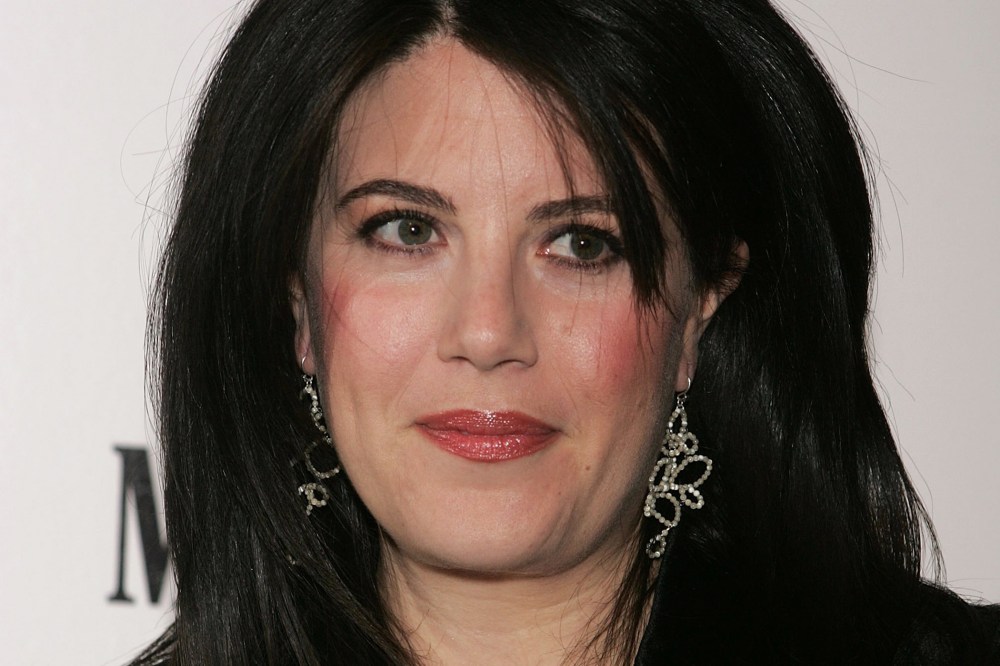“I don’t want to make a career out of being Monica Lewinsky. I haven’t done anything to be proud of.”
That’s what Lewinsky told her biographer, Andrew Morton, in Monica’s Story, published in 1999. This week, with Lewinsky back in the spotlight with a first-person essay in Vanity Fair, it is clear that she has not gotten her wish. She writes that she has been unable to get a job and is still dogged by the scandal of her long-ago affair with Bill Clinton.
Lewinsky’s latest re-entry into public life is primed with material to make a very well-trod story newly relevant: She addresses Hillary Clinton’s possible 2016 presidential run, she wants to talk about online bullying, and, in several lengthy passages, she feels betrayed by feminists.

Lewinsky points out that she was partly pulled back into the spotlight by Kentucky Republican Sen. Rand Paul, another likely 2016 presidential hopeful, who referred to Bill Clinton as “predatory” in recent interviews to counter Democratic claims of a GOP “war on women.” (You may be familiar with this line of attack from other tales of sexual impropriety or harassment by Democrats, including former Rep. Anthony Weiner or former San Diego mayor Bob Filner — which neatly elides the fact that the bulk of the “war on women” is about policy. The Clinton affair was, in fact, the original flavor of this tactic.) Lewinsky agrees with conservatives on this much: Feminists were not there for her.
“I still have deep respect for feminism and am thankful for the great strides the movement has made in advancing women’s rights over the past few decades,” she writes in the essay. “But, given my experience of being passed around like gender-politics cocktail food, I don’t identify myself as a Feminist, capital F.”
She writes that “some good, old-fashioned, girl-on-girl support was much in need. None came.”
Lewinsky singles out a particularly egregious roundtable convened by the New York Observer in 1998 which included the writers Erica Jong and Katie Roiphe, wherein Lewinsky was referred to as “some non-brilliant woman” and “not that pretty.” The writer Nancy Friday suggested that as a next career step, “She can rent out her mouth.”
As Rebecca Traister points out, these women hardly represented powerful positions in organized feminism. (Roiphe in particular has made a career as an antagonist of feminism.) But it doesn’t take long to find other, even higher-profile examples that should, and sometimes did, make a principled feminist cringe, and which corroborate Lewinsky’s account.
The bestselling author of Backlash, Susan Faludi said, “If anything, it sounds like she put the moves on him,” and said Lewinsky had been “sleeping her way to the bottom of the Revlon empire.” (Shortly before the affair became public, Clinton’s friend Vernon Jordan had been trying to arrange a job for Lewinsky at Revlon in New York in part to get her away from the president.)
Feminist and Democratic strategist Susan Estrich wrote, “Lewinsky at least appears to have flirted her way to a job at Revlon and, when that disappeared, a $2 million modeling offer and the status of the most-sought after woman in the world. Not bad, some might say, for someone who can’t type.”
NOW’s president, Patricia Ireland, did issue a statement saying, “We want to state clearly our belief that it would be a misuse of power for any public official to have a sexual relationship with an employee or intern.” But that was after broad criticism of the group’s initial silence on the matter. Gloria Steinem wrote an op-ed in the New York Times that awkwardly tried to thread the needle, saying, “The power imbalance between them increased the index of suspicion, but there is no evidence to suggest that Ms. Lewinsky’s will was violated; quite the contrary.”
If Kathleen Willey, who had accused Clinton of sexual assault, was telling the truth about his behavior towards her, Steinem wrote, “[Willey] pushed him away, she said, and it never happened again. In other words, President Clinton took ‘no’ for an answer.” That is a depressingly low bar for a man who both holds disproportionate power and who was supposed to be on feminists’ sides.
What accounted for this squirming among feminists? It wasn’t just that Clinton was a Democrat after decades in the Reagan-Bush wilderness, a pro-choice president who appointed Ruth Bader Ginsburg to the Supreme Court and signed the Family Medical Leave Act, although that was crucial. After all, feminists could argue that whatever Lewinsky meant as a symbol shrank next to the impact of Republican policies on millions of women.
But there was something else: Lewinsky scrambled the framework of consent that had been hammered out, because she was a woman who always insisted she hadn’t been exploited.
She still insists that. “Sure, my boss took advantage of me, but I will always remain firm on this point: It was a consensual relationship,” Lewinsky writes in Vanity Fair.
Meanwhile, feminists were sensitive to decades of claims that they were anti-sex. “We’re not against sex; we’re against the use of sex to cajole, humiliate, coerce,” Steinem told journalist Marjorie Williams in Vanity Fair at the time. “We need to trust the women here. If we say a 21-24 year old has no sexual will, we’re going against the whole struggle for self-determination and taking responsibility for our own lives,” Steinem added.











